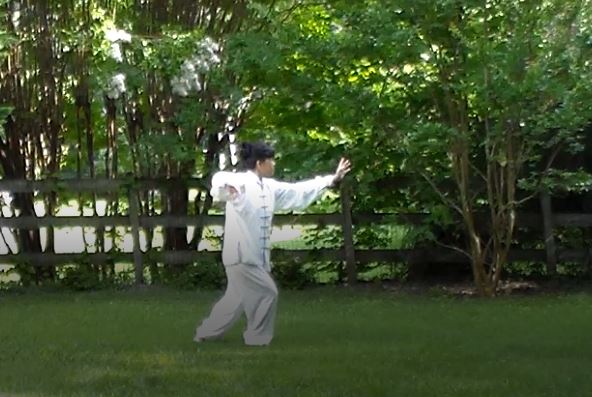One of the most important joints of the human body is the knee. Knee injury is quite common in various intense sports. Practicing Tai Ji form is not a fierce sports event, but still, you could hurt your knee if didn’t do it in the right way, because practicing Tai Ji requires a lot of body turning and body weight shifting.
Inadequate warm-up before practicing Tai Ji forms is among the common causes of knee pain. Adequate warm-up before practicing the Tai Ji form is like lubricating and preheat a machine before running it. It helps to loosen up the muscle ligaments around the knee joint and prevent sprained.
Incorrect postures of stance, wrong way of turning the body, and shifting the body weight are the other common causes of knee pain. Incorrect bow stances and horse stance posture could put body weight on the knee instead of the heel. Shifting body weight before the toe and knee aligned properly when turning the body could easily hurt the knee.
The exercises design for the warm-up in a Tai Ji class usually include stretching, basic Tai Ji, and Qi Gong. Basic Tai Ji exercise is for warm-up, but also for helping you to practice and remember the right postures and movement through repetition. Some basic key points to remember when doing basic Tai Ji exercises are to bend your knee, relax your shoulder, loosen your hip, shift your weight, and turn with your center. With repeated practice mindfully, the right posture and movement can come naturally when you perform the Tai Ji form.
Qi Gong is for the warm-up, but most importantly for cultivating internal energy and building physical strength. For people who had or have knee problems, it is especially important to practice Qi Gong before practice the Tai Ji Form. Increased international energy helps to unblock the blockage, massage organs, and strength the knee. The horse stance is the basic posture of static Qi Gong exercise. The key points to remember for the horse stance are to keep your foot shoulder wide, to bend your knee, to keep your upper body straight, to relax your shoulder, and loosen your hip. When doing Qi Gong, you may try to breathe deeply, and count your breath to help you keep focus. You may also try to put your body weight on your heel to avoid putting weight on your knee.
Stretch exercises, basic Tai Ji exercises, and Qi Gong exercises are important exercises to warm up your body and joints before starting to learn or practice the Tai Ji form. They may not be as fun as doing Tai Ji forms or learning the new steps, but they help you to enjoy more and get more benefits from practicing Tai Ji forms.
